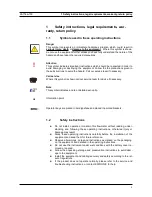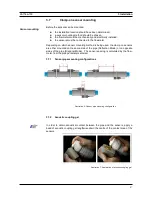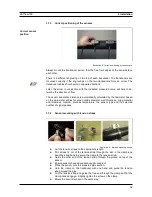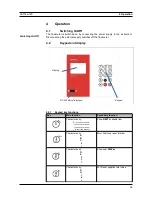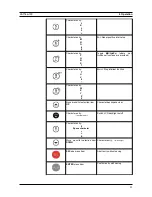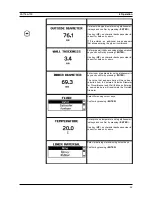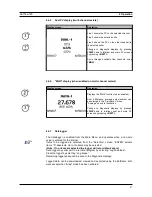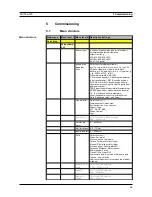
KATflow 150
3 Installation
3.4
Pipe preparation
Clean dirt and dust from around the area of the pipework where the
sensors are to be placed.
Remove loose paint and rust with a wire brush or file.
Firmly bonded paint does not necessarily need to be removed provided the flow-
meter diagnostics indicate sufficient signal strength.
3.5
Clamp-on sensor mounting configurations and separ-
ation distance
The most common clamp-on sensor mounting configuration is the Reflection Mode,
sometimes known as V-Mode (see Illustration 3, sketch (1). Here, the ultrasonic
signal passes twice through the medium (2 signal passes). The Reflection Mode is
the most convenient mounting method as the transducer separation distance can
be measured easily and the sensors can be accurately aligned. This method
should be used whenever possible.
An alternative mounting configuration (Illustration 3, sketch (3)) is the Diagonal
mode (Z-Mode). The signals travel only once through the pipe. This method is of-
ten used for larger pipes where greater signal attenuation might occur.
Further variation of the Reflection and the Diagonal Modes are possible by altering
the number of passes through the pipe. Any even number of passes will require
mounting the sensors on the same side of the pipe, while with an odd number of
passes, the sensors must be mounted on opposite sides of the pipe. Commonly,
for very small pipes, sensor mounting configurations such as 4 passes (W-mode)
or 3 passes (N-mode) are used (Illustration 3, sketch (2)).
The transducer separation distance A is measured from the inside edges of the
sensor heads as shown in illustration 3. It is automatically calculated by the flow-
meter based on the parameter entries for pipe outside diameter, wall thickness, lin-
ing material and thickness, medium, process temperature, the sensor type and the
selected number of signal passes.
A negative separation distance A < 0 can occur for mounting configurations on
small pipes where diagonal mode operation has been selected (see Illustration 3,
sketch (3). Negative separation distances may be suggested for reflection mode in-
stallations, but are not possible. In these cases, use diagonal mode or a larger
number of passes.
13
Illustration 5: Clamp-on sensor mounting configurations and sensor spacing
Sensor spacing
Diagonal Mode
Reflection Mode
Transducer separa-
tion distance





